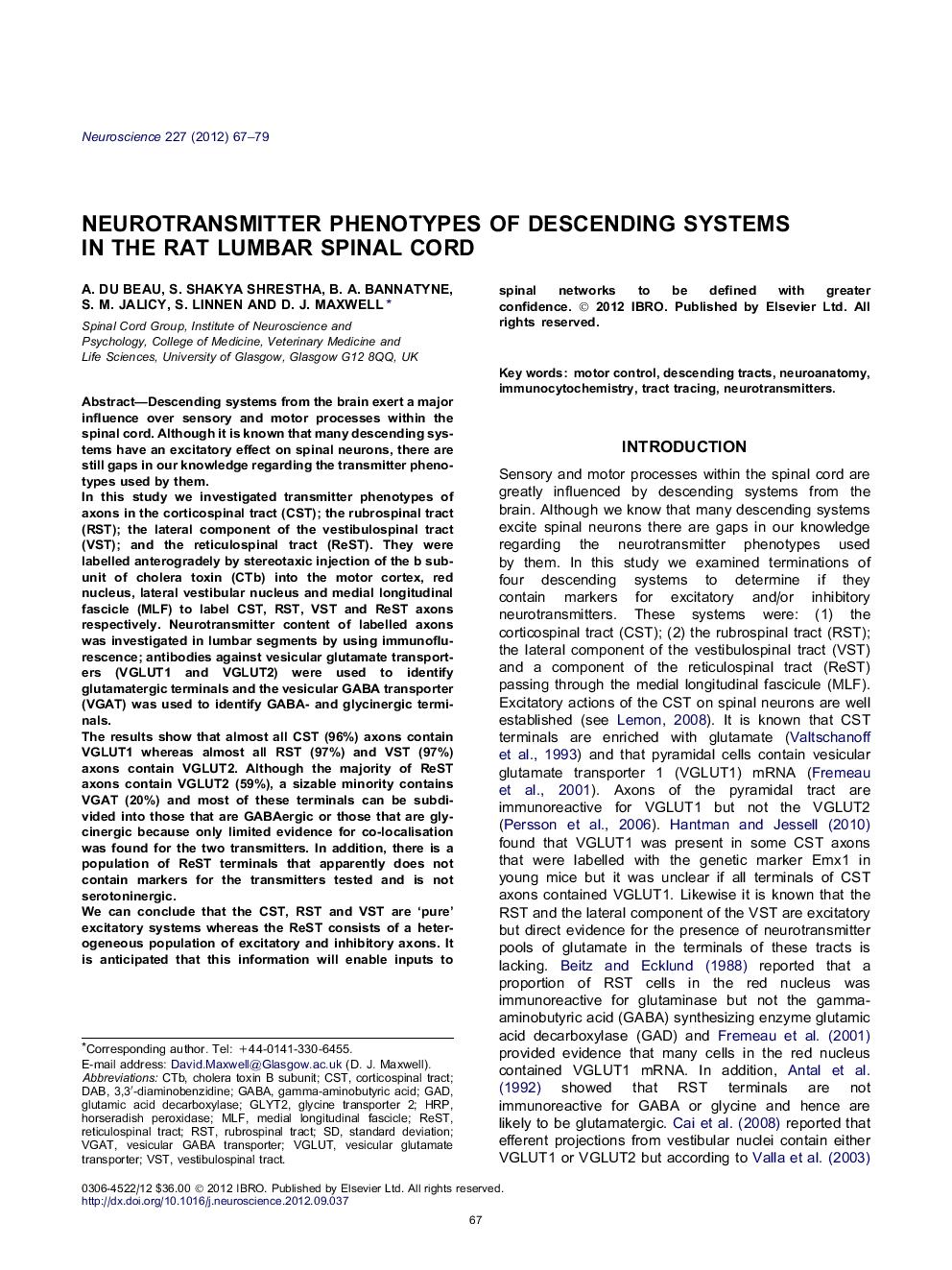| کد مقاله | کد نشریه | سال انتشار | مقاله انگلیسی | نسخه تمام متن |
|---|---|---|---|---|
| 6275302 | 1614849 | 2012 | 13 صفحه PDF | دانلود رایگان |

Descending systems from the brain exert a major influence over sensory and motor processes within the spinal cord. Although it is known that many descending systems have an excitatory effect on spinal neurons, there are still gaps in our knowledge regarding the transmitter phenotypes used by them.In this study we investigated transmitter phenotypes of axons in the corticospinal tract (CST); the rubrospinal tract (RST); the lateral component of the vestibulospinal tract (VST); and the reticulospinal tract (ReST). They were labelled anterogradely by stereotaxic injection of the b subunit of cholera toxin (CTb) into the motor cortex, red nucleus, lateral vestibular nucleus and medial longitudinal fascicle (MLF) to label CST, RST, VST and ReST axons respectively. Neurotransmitter content of labelled axons was investigated in lumbar segments by using immunoflurescence; antibodies against vesicular glutamate transporters (VGLUT1 and VGLUT2) were used to identify glutamatergic terminals and the vesicular GABA transporter (VGAT) was used to identify GABA- and glycinergic terminals.The results show that almost all CST (96%) axons contain VGLUT1 whereas almost all RST (97%) and VST (97%) axons contain VGLUT2. Although the majority of ReST axons contain VGLUT2 (59%), a sizable minority contains VGAT (20%) and most of these terminals can be subdivided into those that are GABAergic or those that are glycinergic because only limited evidence for co-localisation was found for the two transmitters. In addition, there is a population of ReST terminals that apparently does not contain markers for the transmitters tested and is not serotoninergic.We can conclude that the CST, RST and VST are 'pure' excitatory systems whereas the ReST consists of a heterogeneous population of excitatory and inhibitory axons. It is anticipated that this information will enable inputs to spinal networks to be defined with greater confidence.
⺠Descending systems from the brain exert a major influence over sensory and motor processes within the spinal cord. ⺠In this study we investigated transmitter phenotypes of axons in four descending systems. ⺠The majority of these systems are excitatory but a component of the reticulospinal system is inhibitory. ⺠This information will enable inputs to spinal networks to be defined with greater confidence.
Journal: Neuroscience - Volume 227, 27 December 2012, Pages 67-79